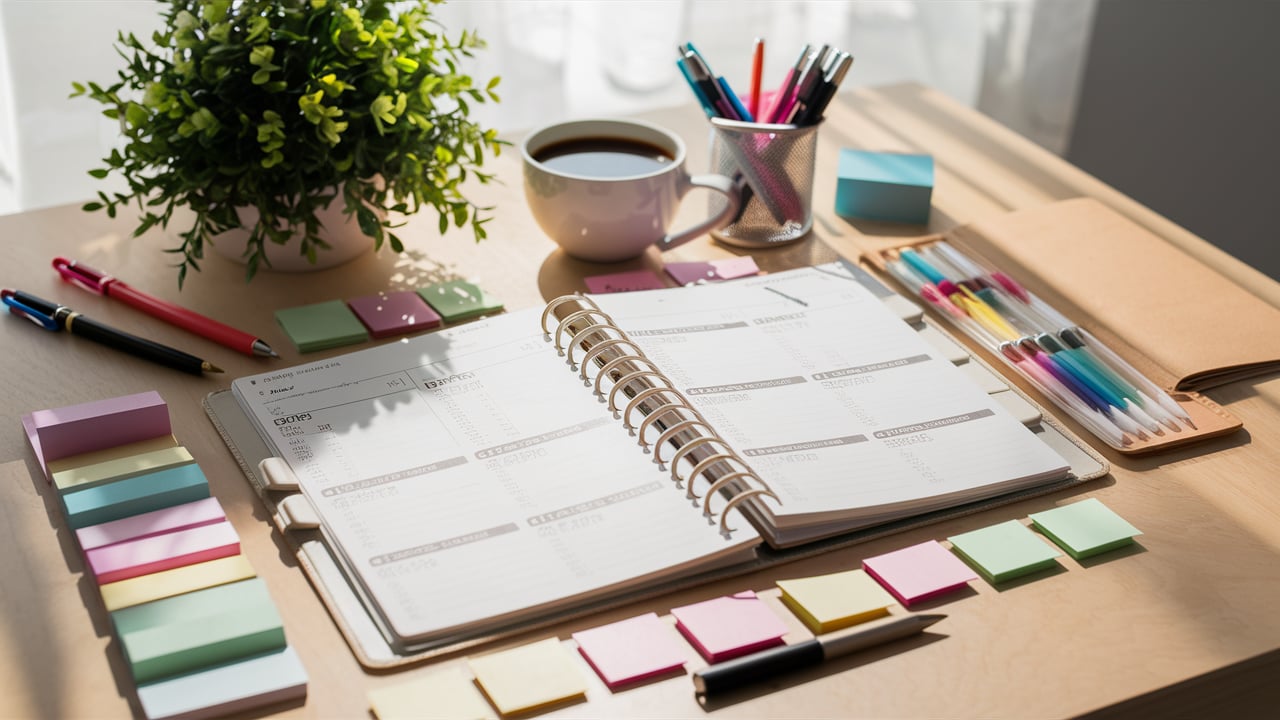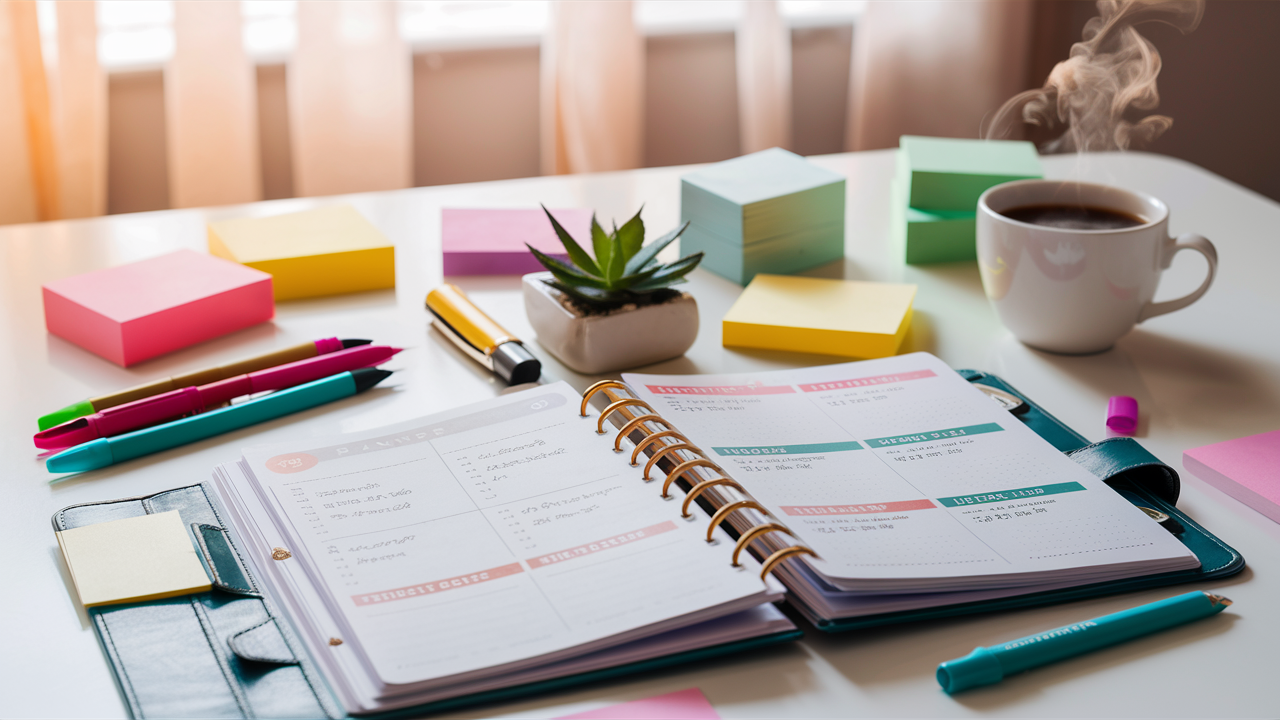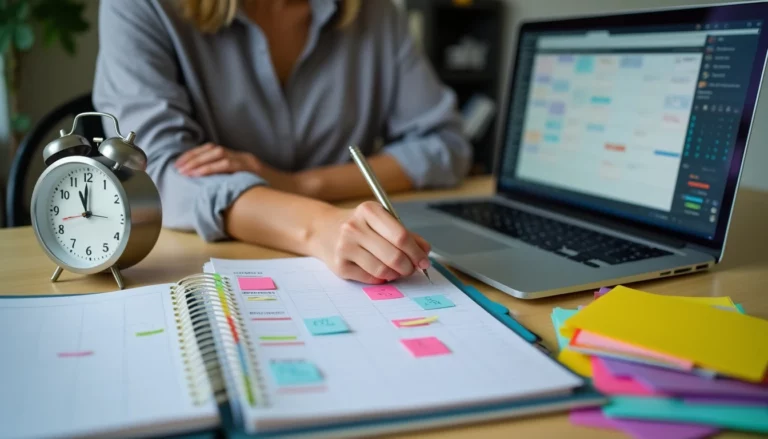Self Improvement Planner Ideas for Beginners
In today’s fast-paced world, personal growth and self-improvement have become central themes for many individuals. Whether you’re looking to boost productivity, develop new habits, or simply reflect on your progress, a self-improvement planner can be an invaluable tool. For beginners, the idea of creating and maintaining such a planner can feel overwhelming. However, with the right approach and strategies, it can be a fun, engaging, and rewarding process.
In this comprehensive guide, we’ll explore self improvement planner ideas for beginners, focusing on unique strategies, creative approaches, and practical methods to help you achieve your personal growth goals.
Why Use a Self Improvement Planner?
A self-improvement planner is not just a to-do list. It’s a structured system that helps you set goals, track progress, and reflect on your journey. By organizing your personal development in this way, you gain clarity, accountability, and motivation to stay on track.
Benefits of Using a Self Improvement Planner:
- Clarity of Goals: Writing down your goals makes them more concrete.
- Accountability: A planner encourages self-accountability through consistent tracking.
- Tracking Progress: Regularly checking your progress gives you a sense of achievement.
- Reducing Overwhelm: Breaking goals into smaller, actionable steps prevents burnout.
- Improved Time Management: Planners help you schedule time for personal development amidst daily responsibilities.
The Science Behind Planner Success
Research by Dr. Gail Matthews at Dominican University found that people who write down their goals are 42% more likely to achieve them compared to those who don’t. This is because writing goals activates neural pathways associated with attention and focus, making individuals more committed to their plans.
Incorporating a self-improvement planner into your routine leverages this research to help you achieve tangible results, making personal growth more attainable.
Getting Started: Essential Elements for a Beginner’s Self Improvement Planner

If you’re new to self-improvement planners, it’s essential to start simple. Here’s a breakdown of the key components to include when creating your planner.
1. Goal Setting Section
The first step in any self-improvement planner is clear, concise goal setting. Make sure your goals are SMART: Specific, Measurable, Achievable, Relevant, and Time-bound. This structure allows you to set realistic objectives that can be easily tracked.
Example Goals:
| Category | Short-Term Goal | Long-Term Goal |
|---|---|---|
| Health | Walk 10,000 steps daily | Lose 10 pounds in 3 months |
| Career | Complete an online course in 4 weeks | Earn a promotion in 1 year |
| Personal Growth | Read 1 book per month | Improve public speaking skills |
Tip: Break your goals into smaller, manageable tasks and assign deadlines to track progress.
2. Daily Habit Tracker
A daily habit tracker is a must-have in any self-improvement planner. It helps you build positive habits that align with your long-term goals. Start small with 3-5 habits that you want to focus on, such as reading, exercising, or meditating.
Example Habit Tracker:
| Habit | Monday | Tuesday | Wednesday | Thursday | Friday | Saturday | Sunday |
|---|---|---|---|---|---|---|---|
| Drink 8 glasses of water | ✓ | ✓ | ✓ | ✗ | ✓ | ✓ | ✓ |
| Meditate for 10 minutes | ✓ | ✓ | ✗ | ✓ | ✓ | ✓ | ✓ |
| Read for 30 minutes | ✓ | ✓ | ✓ | ✓ | ✓ | ✗ | ✓ |
Tracking habits visually lets you see your consistency. Over time, this motivates you to maintain and build on positive routines.
3. Weekly Reflection and Gratitude Journal
Reflection is essential for self-improvement. Dedicate a section of your planner for weekly reflections where you can review what worked, what didn’t, and what changes to make going forward.
Reflection Prompts:
- What were my biggest achievements this week?
- What challenges did I face, and how did I overcome them?
- How can I improve my approach next week?
Alongside this, include a gratitude journal where you jot down three things you’re grateful for each week. Research published in Personality and Individual Differences shows that practicing gratitude regularly boosts happiness and emotional well-being.
4. Monthly Goal Review and Adjustment
At the end of each month, review your progress. Evaluate the goals you’ve achieved and reflect on what still needs attention. This is also the time to adjust your goals if they feel out of reach or no longer align with your priorities.
Monthly Review Questions:
- Did I achieve my goals this month? Why or why not?
- What habits helped me move closer to my goals?
- What new habits do I want to adopt next month?
Adjusting your goals is not a sign of failure; it’s a way to make sure you stay on track in the most effective way possible.
Unique Self Improvement Planner Ideas for Beginners

While many self-improvement planners follow a standard structure, here are some creative and unique ideas that will set your planner apart and make the process more engaging:
1. Gamify Your Planner
Gamification can make personal development more fun. Inspired by Charles Duhigg’s “The Power of Habit,” try turning your self-improvement efforts into a game. Set daily or weekly rewards for completing goals, or track streaks for extra motivation.
Example Rewards System:
- Daily Habit Completion: Earn 5 points for each habit completed.
- Weekly Streak: Hit a streak of 7 days and treat yourself to a small reward (e.g., an hour of leisure time or a favorite treat).
2. Incorporate Affirmations and Positive Quotes
Daily affirmations can boost your self-confidence and mindset. Incorporate a section in your planner for writing positive affirmations or inspirational quotes that resonate with your goals.
Example Affirmation:
- “I am in control of my progress, and I have the power to create positive change.”
3. Create a Vision Board
A vision board adds a visual element to your planner, making your goals feel more tangible. Include images or sketches that represent your long-term aspirations, such as career goals, fitness achievements, or places you want to travel.
Tip: Use the vision board section to visualize both short-term and long-term goals to keep you motivated and focused.
4. Focus on Neuroplasticity
Engage your brain by incorporating activities that boost neuroplasticity. This concept refers to the brain’s ability to form and reorganize synaptic connections, especially in response to learning or experience. Use your planner to schedule daily challenges that stimulate cognitive growth.
Example Brain-Boosting Activities:
- 15 minutes of puzzles: Sudoku, crosswords, or brain training apps.
- Language practice: Dedicate 10 minutes a day to learning a new language.
5. Set Weekly Challenges
Keep yourself engaged by incorporating weekly challenges into your self-improvement planner. These challenges should align with your larger goals but push you outside your comfort zone.
Example Challenges:
- Meditate for 15 minutes each day for one week.
- Write a daily gratitude entry for 7 consecutive days.
- Avoid social media for a full day to improve productivity.
Digital vs. Paper Planners: Which is Better for You?
If you’re wondering whether to use a digital or paper-based planner, consider what works best for your lifestyle. While traditional paper planners allow for more creativity and personalization, digital planners like Trello, Notion, or Google Keep offer flexibility and accessibility.
Benefits of Digital Planners:
- Accessibility: Sync across multiple devices, allowing you to plan on the go.
- Reminders: Set notifications to stay consistent with habits and goals.
- Customization: Easily adjust your planner layouts and designs without the need for physical supplies.
Conclusion: Start Small, Stay Consistent
Creating a self-improvement planner doesn’t have to be a daunting task. Start simple with goal setting, habit tracking, and reflections, and gradually build your planner with more advanced elements as you become comfortable. The key is consistency and making adjustments based on your progress and changing needs.
By implementing these self-improvement planner ideas for beginners, you can make personal development a structured, rewarding, and even enjoyable journey. Whether you prefer pen and paper or digital formats, your planner will help you stay focused, motivated, and on the path to achieving your goals.
FAQs:
- What should I include in my self-improvement planner?
Start with goals, a habit tracker, weekly reflections, and monthly reviews. You can expand to include affirmations, vision boards, and challenges. - How often should I update my planner?
Daily habit tracking and weekly reflections are ideal for keeping you on course. Monthly goal reviews help you adjust as needed. - How can I stay consistent with my self-improvement planner?
Start with small, achievable goals and make planning an enjoyable routine. Incorporate rewards and adjust your approach based on your progress.






